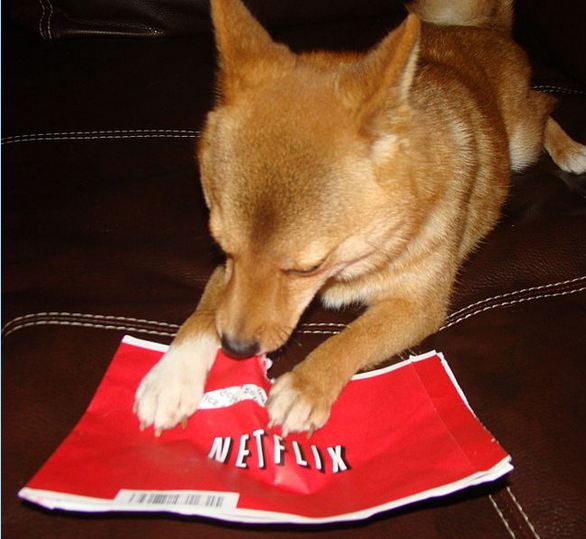Highly recognizable brands can be invaluable, but they require constant attention. Their value can rise or fall because of management decisions, changes in the competitive environment, and the beliefs that a brand has aged beyond its useful lifetime. Often, though, the true causes of drops in brand value are folly and arrogance. 24/7 Wall St.’s review of nine brands that were badly damaged recently shows that even the most powerful brand cannot survive horrible decisions.
Read America’s Nine Most Damaged Brands.
A brand derives its value from several factors. the most obvious being how much it can earn. This is not the least evident with Marlboro — the best-selling brand for its two owners, tobacco companies Philip Morris and Altria. The companies have fostered the cigarette brand through hundreds of millions of dollars of advertising and marketing support. The brand has evolved, adding other versions. Today there are also Marlboro Lights, Marlboro Reds, Marlboro 100s, and Marlboro Menthol. One version of the brand is not enough, in the wisdom of its owners. The evolution of the brand has kept its customer base over the years, and probably added to it.
The brands on this damaged brand list often rose based on lofty claims, and fell when those claims were not realized. The Chevy Volt was meticulously engineered by GM to be its flagship car of the future. Then it had engine fire problems. The Nokia Lumia 900 was built to compete with the Apple iPhone. Just as it was introduced in the U.S. market, it was discovered to have a software flaw that could prevent data downloads. The Airbus A380 “super jumbo” was made to be the most advanced passenger jet in the world, until its wings began to crack.
For our purposes, a brand doesn’t have to be a product or service. People can be brands. Famous sports figures count on their images for large endorsements. Tiger Woods proved how swiftly a sports brand can be destroyed. A country can be a brand. Street violence in Jamaica in 2010 triggered a warning about travel to the island from the U.S. State Department. All of these brands are among the most widely recognized and consumed brands by America.
These are America’s Nine Most Damaged Brands.
9. American Airlines
“Is American the Worst-Managed Airline in America?”–Time Magazine (2/6/12)
American Airlines has been destroying its brand — and not just with consumers. Probably the least important to customers but most important to investors is the fact that parent AMR filed for bankruptcy protection on November 29 of last year. While airlines have effectively been using Chapter 11 for years to shed debt, American Air had been the exception. As the flag carrier for the U.S. and the largest domestic based airline until 2007, American was the industry leader.
After destroying its brand with investors, American moved on to consumers. It had only been in Chapter 11 for five months when the 22-year-old U.S. airline customer satisfaction, “Airline Quality Rating,” rated American next to last among the large national carriers, after United. It also ranked its regional carrier, American Eagle, dead last among all of the carriers rated. American fared poorly in several of the areas that customers find most important. On-time arrivals fell from 79.8% in 2010 to 77.8% in 2011. Denied boardings worsened from 0.86 in 2010 to 0.92 in 2011.
American may be about to destroy its brand with yet another group. It will try to get the bankruptcy court handling its case to void its labor contracts.
8. Nokia
“Software Glitch Mars Nokia’s U.S. Re-Entry”–Wall Street Journal (4/12/12)
Nokia had 40% of the global hand set market in 2007. Its three challengers — Motorola, Samsung, and Sony Ericsson — had less market share combined. Research in Motion sold its BlackBerry at the time, but almost all of its customers were large companies. Apple did not release the first iPhone until June 29, 2007. Google’s Android OS, now so popular, was not commercially available.
In less than four years, Nokia went from being the top mobile phone company in the world to a company whose future is questioned by Wall Street. Nokia’s share price is down 80% from its price five years ago. It was time to act. In an attempt to correct the company’s slide, CEO Stephen Elop, a former Microsoft executive, decided to form a partnership with his old employer. The world’s largest software company had no success getting its Windows Mobile OS widely adopted.
The two companies decided to attack the market together by combining their hardware and software to make smartphones. Leveraging Microsoft’s massive marketing and R&D budget, together the companies had a chance to challenge Apple and Google. When announcing the partnership, the Finnish company company said, “Nokia plans to form a strategic partnership with Microsoft to build a global mobile ecosystem based on highly complementary assets. The Nokia-Microsoft ecosystem targets to deliver differentiated and innovative products and have unrivalled scale, product breadth, geographical reach, and brand identity.”
The flagship of the new venture is the Lumia smartphone, which was built to challenge the Apple iPhone and high-end products from Samsung. Nokia set an alliance with AT&T in the U.S., and the earliest sales figures were impressive. Nokia said it sold more than 2 million units of all its Lumia smartphone models in the quarter that ended March, up from over 1 million in the overlapping November-to-January period. But analysts had expected an even faster uptick in sales. Mikael Rautanen from research firm Inderes said he was expecting twice the sales volume.
Following the muted success of early versions of Lumia devices overseas, the Lumia 900 was launched in America. Nokia announced the most recent model had a software bug that could cause the smartphone to disconnect from data networks. The news was a public relations nightmare and it was widely assumed that U.S. sales would plummet. In response, Nokia said it would issue $100 rebates to owners of the handsets, which is a penny more than what they paid for them. The phone may be broken, but it’s free.
7. Netflix
“Netflix continues downward spiral amid backlash”–AP (9/20/11)
Netflix made it look so easy — growing for so many years. The company started to deliver DVDs by mail in 1999. It effectively competed with industry behemoth Blockbuster, which had more than 4,000 stores until its business started to fall apart in 2009. That same year, Netflix reached 10 million subscribers and offered almost 100,000 titles.
Netflix’s management decided that people would rather get their DVDs by mail instead of driving to a store, and, as was often the case at Blockbuster, paying late fees. The inventiveness of Netflix did not end there. Broadband Internet made it possible to stream movies and TV shows. Netflix set up a streaming service and essentially knocked the DVD players off the tops of many TV sets across America. The product was such a huge success that by early 2011 it had well over 21 million subscribers.
Just as it seemed impossible for Netflix to lose its edge it did what competition could not — it alienated its own customers and caused hundreds of thousands of them to cancel their service.
The company had made a simple and awful misstep. It sharply raised prices, probably on the theory that its service was well loved and irreplaceable. The size of the increase was remarkably large — 60%. The negative reaction was so overwhelming that Netflix divided itself into two services: one for online DVD rentals and the other for streaming customers. Those who subscribed to only one service would not face the price hike. The new service — Qwikster — lasted only a few weeks. As tech site AllThingsD wrote at the time, “Qwikster Is Gonester: Netflix Kills Its DVD-Only Business Before Launch.“
The damage to the company’s customer reputation was so bad that it may never entirely recover. Just after the debacle, a prominent research firm reported a breathtaking drop in Netflix customer satisfaction. When research firm ForeSee released its annual Holiday E-Retail Satisfaction Index on December 28, 2011, it wrote that “Today’s report provides the first scientific quantification of customers’ experience with Netflix since its missteps earlier this year. With its satisfaction decline, Netflix has gone from satisfaction superstar to merely average.”
Continue Reading America’s Most Damaged Brands
6. Airbus 380
“Airbus A380 Fleet Needs Full Inspection of Wings Amid Cracks”–Bloomberg (2/8/12)
U.S. airlines now own nearly as many Airbus planes as they do Boeing aircrats. The Airbus 380 was the European company’s response to the tremendously successful Boeing 747 jumbo jet, which was at the top of the large plane market after its launch in 1970. The A380 is bigger than the 747; it has two full decks and seats up to 535 people. After several delays, the jet was finally delivered at the end of 2007 and became a critical part of the long-haul fleets of Singapore Air, Qantas, Lufthansa and Emirates — all of which have routes between large cities around the world. But with the many problems in the A380 program, European conglomerate EADS — Airbus parent — was merciless with management changes.
Once the A380 was launched, it sold successfully. Eighty-five planes have been built already, and the model sells for nearly $400 million. But the aircraft’s strong run was short lived. Qantas found cracks in the wings of one of its A380 — a total of 36 on a single plan. The European Air Safety Agency decided that all of the planes had to be checked immediately and issued a directive: “This condition, if not detected and corrected, may lead to a reduction of the structural integrity of the aeroplane.”
Aside from the safety concerns, there are financial consequences as well. Emirates said it will lose $90 million due primarily to the cost of maintenance and repairs. The carrier’s CEO Tim Clark told the Financial Times, “From a commercial point of view, it’s a
dreadful experience. It has caused a lot of commercial hardship and we are not
very happy with the way this has gone.”
5. Rush Limbaugh
“Rush Limbaugh’s ‘slut’ comment draws rebukes from all sides” —LA Times (3/2/12)
The radio industry’s bible, “Talkers,” crowned Limbaugh king of all radio hosts for 2011. The publication used Arbitron data to set Rush’s weekly audience at over 15 million. Fellow right-winger Glenn Beck’s audience is only 8.5 million. The Drudge Report said that Limbaugh’s compensation package totaled $400 million for the period from 2008 to 2016. Limbaugh also lead a Zogby poll about the most trusted names in news.
Limbaugh’s stretch at the top of the radio food chain was severely undermined on February 29 when he made scathing comments about a Georgetown University law student Sandra Fluke. Fluke, testifying before Congress, supported mandating health insurers to cover contraceptive costs. Limbaugh reacted to her testimony by saying “[Fluke] essentially says that she must be paid to have sex — what does that make her? It makes her a slut, right? It makes her a prostitute. She wants to be paid to have sex. She’s having so much sex she can’t afford the contraception. She wants you and me and the taxpayers to pay her to have sex.” He kept up the barrage for two days.
Rush only backed down after his comments were repudiated by several senior Republicans and a number of national advertisers deserted his show. David Friend, the CEO of one of Limbaugh’s largest advertisers, Carbonite, said “No one with daughters the age of Sandra Fluke, and I have two, could possibly abide the insult and abuse heaped upon this courageous and well-intentioned young lady. Mr. Limbaugh, with his highly personal attacks on Miss Fluke, overstepped any reasonable bounds of decency.” The New York Times also reported about the boycott: “It is, analysts say, the most serious rebellion against ‘The Rush Limbaugh Show’ in the more than 20 years that the show has been broadcast.”
4. Greece
“The Acropolis is not in flames”–SmartMoney (2/15/12)
Greece has been one of America’s most important tourist destinations for years. No longer.
Tourism revenue is 15% of Greece’s GDP, which is one of the reason the nation is in so much trouble now. Businesses in the country have watched the number of people who travel to the southern European nation fall. Contributing factors to the drop are the fact that Greek air traffic controllers occasionally shutter airports and drivers sometimes quit their public transportation posts. They do so as a means to protest austerity measures that have cut their pensions and pay in the name of bringing down the national deficit. Businesses in Greece have watched the situation deteriorate so much that they expect the trend will continue, or even worsen.
The Greek news agency ANSAmed reports: “Business expectations in the Greece’s tourism sector fell significantly in the fourth quarter of 2011, a recent survey showed. The business expectations index fell to 71 points for hotel enterprises and to 48 points for tourism enterprises, down 35 and 22 points, respectively, from the previous three-month period.”
“It took years for Athens to get a good reputation with the 2004 Olympic Games,” the president of the Hellenic Hotel Federation, Giannis Retsos, told BusinessWeek. “Last year showed how this reputation can be destroyed in one day through one incident.”
The Greek islands, the beaches, Athens, the Acropolis — Greece markets itself with the tagline “You In Greece.” Right next to the protestors with the stones and Molotov cocktails.
Continue Reading America’s Most Damaged Brands
3. New Orleans Saints
“Saints coach suspended for season over bounties”–WSJ (3/21/12)
New Orleans Saints owner Tom Benson had a team that was worth $965 million, according to Forbes. That was before NFL commissioner Roger Goodell announced its head coach Sean Payton was suspended for a year and general manager Mickey Loomis for eight games for their role in the so-called bounty system. The suspension left the team, which had won the Super Bowl in 2010 and contended in several other recent seasons, without leadership. What’s worse is that a few of the team’s players could also be suspended for participating in the bounty system that paid players to hurt opponents.
The Saints had come from nowhere seven years ago. They rose to become the symbol of a city nearly destroyed by one of the deadliest hurricanes to ever make landfall in the U.S. The team’s stadium, The Superdome, was used to shelter thousands of people and was nearly ruined by wind. The Saints surged from a 3-13 season the year Katrina hit to a 10-6 performance the year after, making the playoffs in the process. All along fans cheered on “Who Dat?” — the team’s battle cry — from the cheap seats. It was the city’s phoenix.
Now, Benson has to wait to see if the fans will come out in the numbers they have since 2006, and whether all the sponsors will hold their places. He has to wonder whether his team can make the playoffs again without its gifted coach and probably some of its key players and earn him some extra money again.
2. Chevy Volt
“8,000 Volt Hybrids Recalled For Possible Battery Fire Issues”–CBS (1/6/12)
The Chevy Volt was supposed to be the start of a revolution in car technology. The car was launched on September 16, 2008, by GM CEO Rick Wagoner, who soon after lost his job because of GM’s poor financial performance. “Revealing the production version of the Chevy Volt is a great way to open our second century. The Volt is symbolic of GM’s strong commitment to the future … just the kind of technology innovation that our industry needs to respond to today’s and tomorrow’s energy and environmental challenges,” Wagoner said. When the EPA issued new methods of measuring mileage efficiency later in 2009, the Volt was rated at 230 miles per gallon, effectively making the price of gas nearly irrelevant.
The Volt was not just another car. It was the beleaguered car manufacturer’s signal that it could compete with major competitors like Toyota and VW. GM particularly needed the Volt to show the bankruptcy Chapter 11 process had not robbed it of its ability to innovate.
Despite the high public relations value of the Volt, GM set only modest goals for first year sales. It said it would sell 10,000 Volts in 2011. It ended up selling only 7,671. Even if the Volt was the perfect car, not many people wanted one. Demand dropped even further when the National Highway Traffic Safety Administration reported that two out of three Volts had battery fires after side impact tests. GM recalled about 8,000 Volts. The carmaker then offered loaners to owners who wanted repairs. Finally, the No.1 U.S. car company said it would buy back any and all Volts with the troubled batteries.
Corrections made to the Volt’s engine structure satisfied the NHTSA, and the Volt was proclaimed safe to drive again. The damage, however, was already done as the Volt’s already modest sales plummeted further. In March of this year, GM said it would suspend production of the Volt at its Detroit-Hamtramck assembly plant from March 19 until April 23 because of lack of demand. GM’s 21st Century flagship had become a bust.
1. Keith Olbermann
“Current went through eight different [limo] companies with Keith. Each and every time . . . he didn’t like them”—NY Post (4/2/12)
Keith Olbermann quit, or got fired, from tiny, struggling cable network Current TV on March 30. He joined the organization in February 2011 after a successful but rocky stint at MSNBC. Olbermann claimed that the Current TV did not have professional production facilities and misused his time. The network claimed he did not fulfill his contractual obligations. Each side has sued the other, and the cases may go on for months.
Before he departed MSNBC to go to Current TV, Olbermann was that network’s star with an average audience of about three quarters of a million viewers. He battled NBC management as well and was suspended for two days in early November 2011 for making political donations which he did not disclose to the network. The suspension only made Olbermann more popular. The first night back from the suspension, his audience number reached 1.5 million.
Now, one of the most popular TV personalities will not be on the small screen for a very long time, if ever at all. His $50 million contract with Current TV could also be voided in court. Perhaps the greatest insult to Olbermann is that he was replaced on Current TV by Eliot Spitzer, a former governor who cannot seem to find permanent work.
Olbermann’s obnoxious behavior, which alienated management at MSNBC and Current TV, may cost him tens of millions of dollars. Beyond that, his career in television may well be over completely.
-Douglas A. McIntyre
The Average American Is Losing Momentum On Their Savings Every Day (Sponsor)
If you’re like many Americans and keep your money ‘safe’ in a checking or savings account, think again. The average yield on a savings account is a paltry .4%1 today. Checking accounts are even worse.
But there is good news. To win qualified customers, some accounts are paying more than 7x the national average. That’s an incredible way to keep your money safe and earn more at the same time. Our top pick for high yield savings accounts includes other benefits as well. You can earn up to 4.00% with a Checking & Savings Account today Sign up and get up to $300 with direct deposit. No account fees. FDIC Insured.
Click here to see how much more you could be earning on your savings today. It takes just a few minutes to open an account to make your money work for you.
Our top pick for high yield savings accounts includes other benefits as well. You can earn up to 4.00% with a Checking & Savings Account from Sofi. Sign up and get up to $300 with direct deposit. No account fees. FDIC Insured.
Thank you for reading! Have some feedback for us?
Contact the 24/7 Wall St. editorial team.





